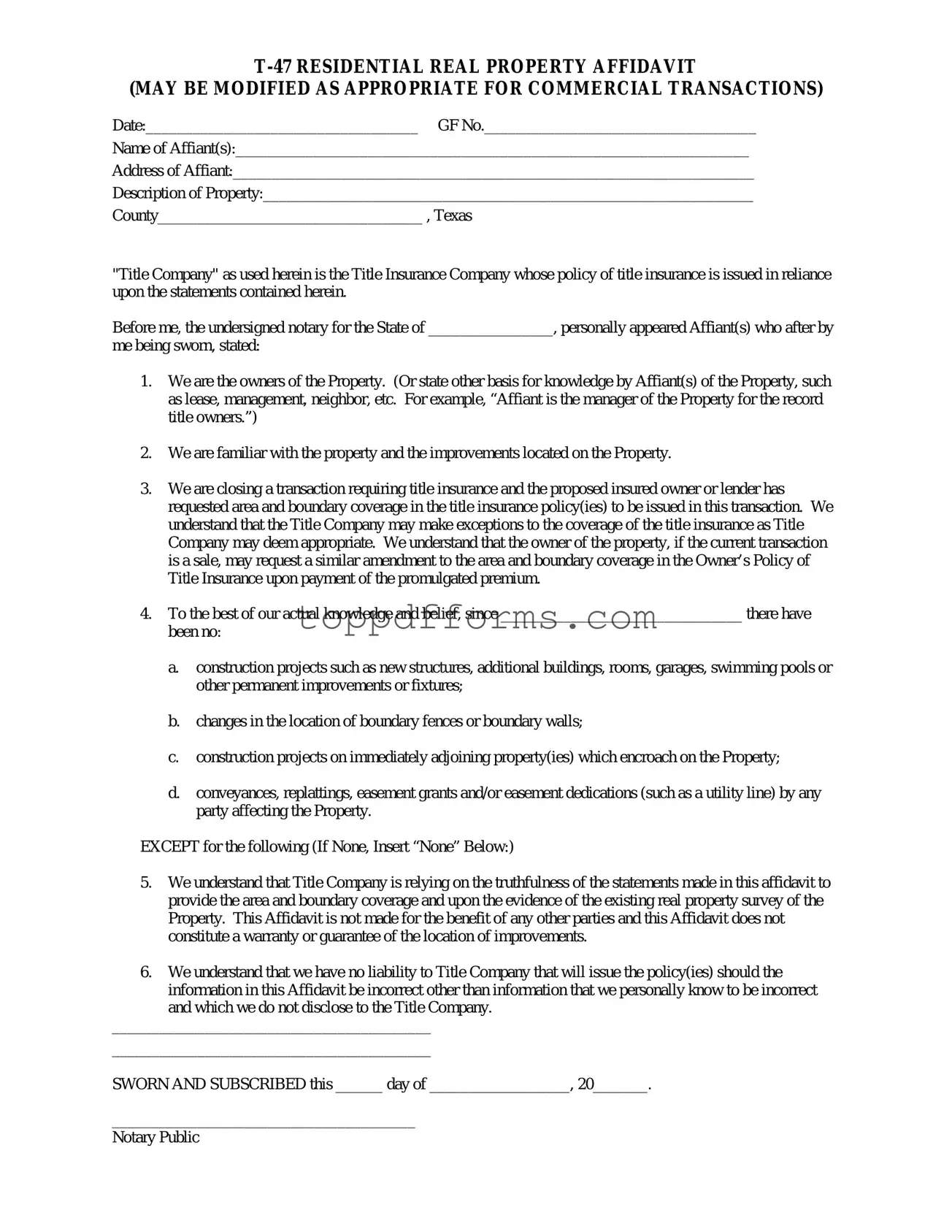What is the Texas residential property affidavit T-47 form?
The Texas residential property affidavit T-47 form is a document used primarily in real estate transactions. It serves as an affidavit that verifies certain facts about the property, typically related to ownership and the status of any liens. This form is crucial for ensuring that all parties involved have a clear understanding of the property's legal standing.
Who needs to complete the T-47 form?
The T-47 form is typically completed by the seller of the property. It may also be required by the title company or lender involved in the transaction. Completing this form helps provide assurance to buyers and lenders that the information regarding the property is accurate and up-to-date.
When should the T-47 form be submitted?
This form should be submitted during the closing process of a real estate transaction. It is essential to provide it before the transfer of ownership occurs to ensure that all parties have the necessary information to proceed without complications.
What information is required on the T-47 form?
The T-47 form requires details about the property, including its legal description, the names of the current owners, and any existing liens or encumbrances. The seller must also affirm that they have not made any significant changes to the property that could affect its value or title since the last transaction.
Is the T-47 form legally binding?
Yes, the T-47 form is legally binding. By signing this affidavit, the seller attests to the truthfulness of the information provided. Misrepresentation or failure to disclose relevant facts can lead to legal consequences, including potential lawsuits from the buyer or lender.
Can the T-47 form be modified after submission?
Once the T-47 form has been submitted and signed, it generally cannot be modified. If changes are necessary, a new form may need to be completed and submitted to reflect the updated information. Always consult with a real estate professional for guidance on how to proceed.
What happens if the T-47 form is not submitted?
If the T-47 form is not submitted, it could delay the closing process. Buyers and lenders may be hesitant to proceed without this important information. In some cases, the absence of the form could lead to complications in the title transfer, potentially jeopardizing the transaction.
Where can I obtain the T-47 form?
The T-47 form can typically be obtained from a title company, real estate agent, or online legal form provider. Ensure that you are using the most current version of the form to avoid any issues during the closing process.
Is there a fee associated with the T-47 form?
There is usually no direct fee for completing the T-47 form itself, as it is a standard document in real estate transactions. However, you may incur costs related to the closing process, such as title insurance and other administrative fees. Always ask your title company or real estate agent for a detailed breakdown of any potential costs.
Do I need a lawyer to complete the T-47 form?
While it is not mandatory to have a lawyer complete the T-47 form, consulting with a real estate attorney can provide valuable guidance. They can help ensure that all information is accurate and that your rights are protected throughout the transaction.
